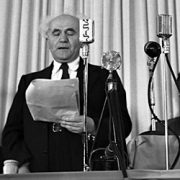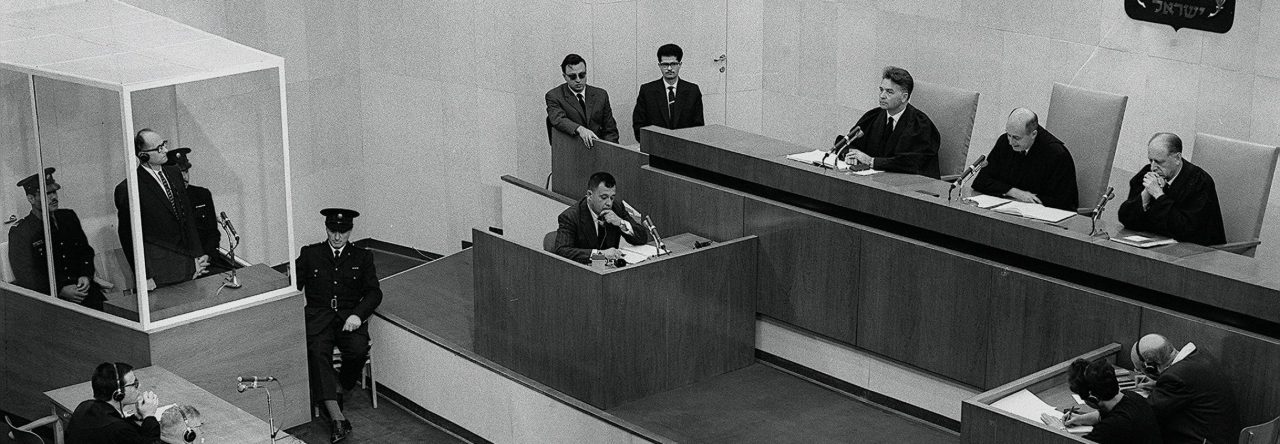Efraim Karsh offers the second response to my Mosaic Magazine essay on the prelude to Israel’s declaration of statehood. He succinctly retells the famous saga of the clash between President Truman and his formidable secretary of state, George Marshall, on whether to recognize the Jewish state. Truman emerges as the hero. But there’s an interesting sequel: Truman was also the first president to issue a stiff threat to Israel. Perhaps I’ll tell that story on another occasion. Read Karsh here.
 Since Israel is primed to mark its 70th anniversary later this week, I’ll quickly tell one of the lesser-known stories about the declaration. The only moving picture camera at the May 14, 1948 ceremony at the Tel Aviv Museum (now Independence Hall) belonged to cinematographer Nathan Axelrod, who had a company that produced weekly newsreels. The Jewish Agency commissioned him at the last minute to film the great occasion.
Since Israel is primed to mark its 70th anniversary later this week, I’ll quickly tell one of the lesser-known stories about the declaration. The only moving picture camera at the May 14, 1948 ceremony at the Tel Aviv Museum (now Independence Hall) belonged to cinematographer Nathan Axelrod, who had a company that produced weekly newsreels. The Jewish Agency commissioned him at the last minute to film the great occasion.
But he only had four minutes of film on hand, to cover a ceremony which was expected to last half an hour. So Ben-Gurion arranged to give Axelrod hand signals and nods at the most important points in the proceedings, so Axelrod would know when to roll the camera. After the ceremony, the Jewish Agency press handlers cut up the original negative into four parts, and sent them out to various news agencies, so that less than a minute of the original survives. Later, the sound (recorded separately) was overlaid with this fragment, but if you watch it, you’ll see that there’s no synchronization between Ben-Gurion’s lips and his words.
(Avi Weissblei tells the story in his documentary film, A State Behind the Scenes, 2010.)
